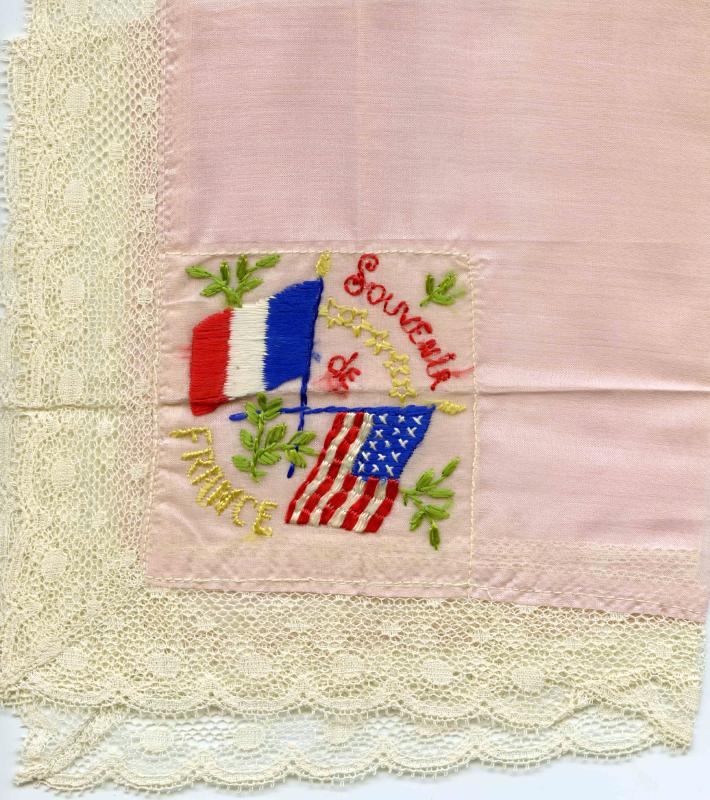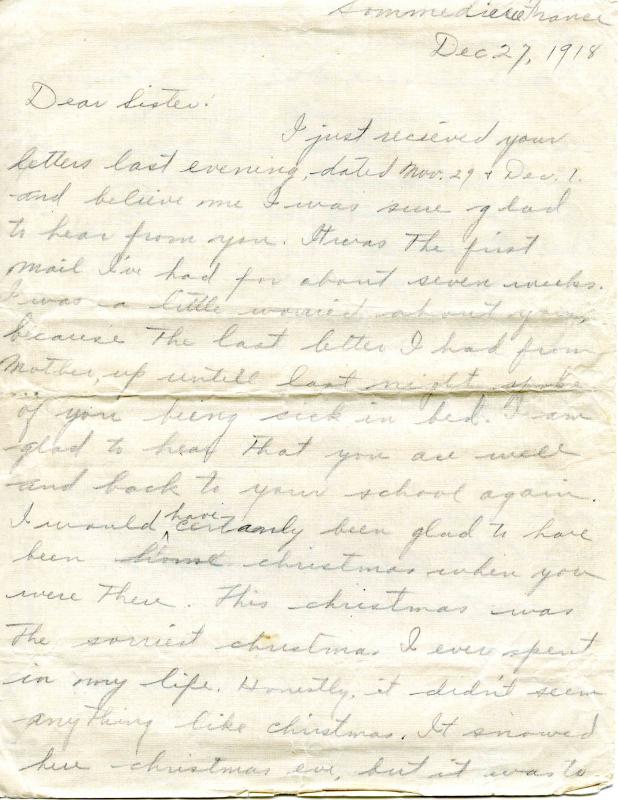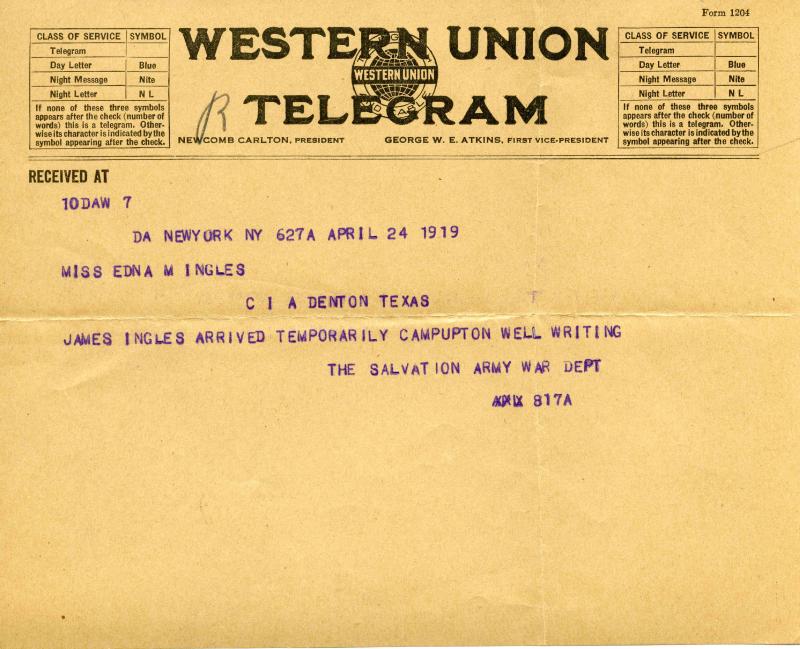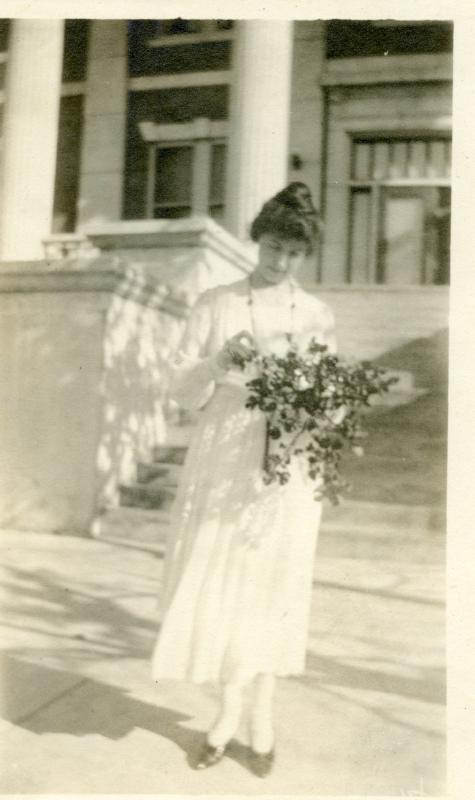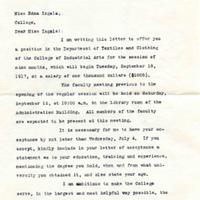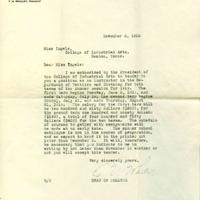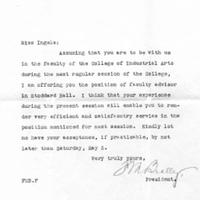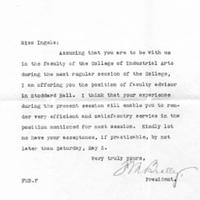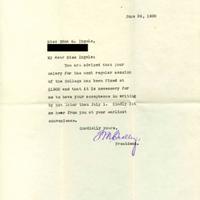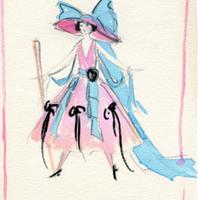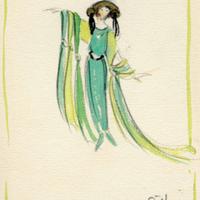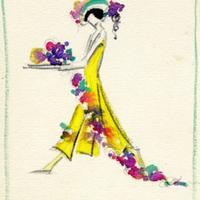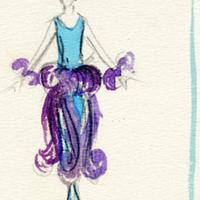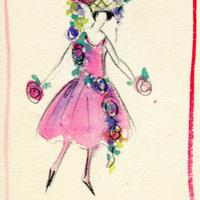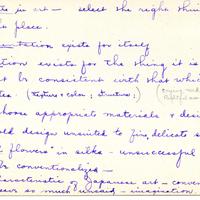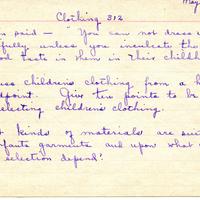Edna Ingels Fritz: Fashion Forward Feminist
Kate Mueller
Before I began work on this subcollection, I expected to create a grand narrative of the life of one woman through her letters. But this was not to be. I found, instead, scattered fragments of a life and an altogether more compelling task: I needed to listen for the dialogue between each artifact because that is where the story would be told.
The collection of Edna Ingels Fritz (1892 - 1982) consists of nine slim folders organized in a single box. The materials circumscribe her life by proffering it to us in single moments that span seven decades. Each one may be viewed and appreciated in isolation for its material qualities and its content. I’d like to illustrate this point using three pieces from the collection: a telegram, a letter, and a silk handkerchief. The handkerchief is lovely in its own right, made of silk, edged in lace, with French and American flags embroidered neatly in one corner along with the phrase “Souvenir de France.” These details identify the handkerchief as an antique souvenir from WWI. Such handkerchiefs were popular with soldiers who sent them home to loved ones, a keepsake physically tied to the absent soldier. The kerchiefs varied widely in design, construction, and quality; Fritz’s happens to be a rather beautiful example. While not particularly valuable in monetary terms, the handkerchief’s value lies in how it documents one way people coped with separation and mortal uncertainty in the midst of war.
From the same folder as the handkerchief, there is a letter is dated December 28th, 1918 which begins with the salutation “Dear Sister.” Straight-ruled tilting cursive covers all four sides of the letter folio and details the day-to-day happenings of a military man stationed in France; it is signed “Your Brother, Corp. James A. Ingels.” Amid sentiments of loneliness in the face of a holiday spent with soldiers instead of family, mouthwatering anticipation for his sister’s home-baked goods arriving soon in the post, and a sense of frustrating uncertainty about when he’d finally be shipping home, Ingels promises that he will send “a silk handkerchief with Souvenir de France on it” the next chance he gets. The letter, at once prosaic and poignant, does not require that readers know anything of either Fritz—the sister to whom the letter was addressed—or Ingels in order to find value in this discourse. The personal details and individual voices add to the historical record of WWI, and as such they’re invaluable.
Filed behind the handkerchief and letter, the telegram is a small rectangle of yellowed paper with ink that has made the transition from black to purple over the last century. The heading identifies the telegram as having been sent through Western Union to Miss Edna M. Ingels at the C.I.A. (College of Industrial Arts) in Denton, TX on April 24th, 1919. Sent courtesy of the Salvation Army War Department, the message states that “James Ingels arrived temporarily Camp Upton well writing.” The words on the document are all capitalized and the spacing is a bit uneven, all of which make the brief message seem more inscrutable. A little investigation reveals that during WWI Camp Upton was the point of embarkation for troops headed overseas, as well as the point of debarkation and demobilization for troops returning to the states at the end of the war. In the telegram’s single sentence, Ingels was communicating to Fritz (née Ingels) that he had arrived safely, would soon be decommissioned, and would write more later. The terse language in that single sentence must certainly have belied the emotion this soldier felt at being back on American soil. The war telegrams remembered best in our shared national memory are those which began, “We regret to inform you…,” Ingels’ telegram provides an excellent counterpoint to that grim message so many families received.
Each of these items has its own intrinsic value, but their individual stories cannot complete the narrative of Fritz’s life. However, there is another way to look at these artifacts, and that is to place them within the context of the whole collection. If each artifact is tethered to a moment of Fritz’s life, then the collection provides the means to gather those moments and to imagine the spaces between them. These connecting spaces and material artifacts have the potential to create countless narratives. Taken together, the handkerchief, letter, and telegram describe the bond between Fritz and her brother. The items invite us to add emotional value to these objects and fill in what has been left unsaid.
Another narrative suggested by the materials in this collection begins about the same time that Fritz’s brother enlists in the army. In a letter dated June 27th, 1917, the president of the College of Industrial Arts offers Miss Edna Ingels a position teaching in the department of Textiles and Clothing. Subsequent letters document Fritz’s promotions, as well as her engagement in university life. For instance, Fritz was tasked with creating costumes for a faculty stunt entitled “The League of Notions.” The costume mockups she produced are one of the featured items of this collection. They are exquisite watercolors rendered with elegant lines and lush colors. Elsewhere, in Fritz’s personal lecture notes, we find a hint about one of her design influences when she includes this John Ruskin quote: “Art in its highest aim is an expression and awakening of individual thought.” Fritz’s professional letters, personal notes, and watercolors may not create a grand narrative; but taken together, they paint a portrait atop all the everyday moments these artifacts represent. This portrait shows a woman who was able to use her talent and passion to find both satisfaction and success in her career. It is a portrait that I find inspiring, and I hope you will as well.
